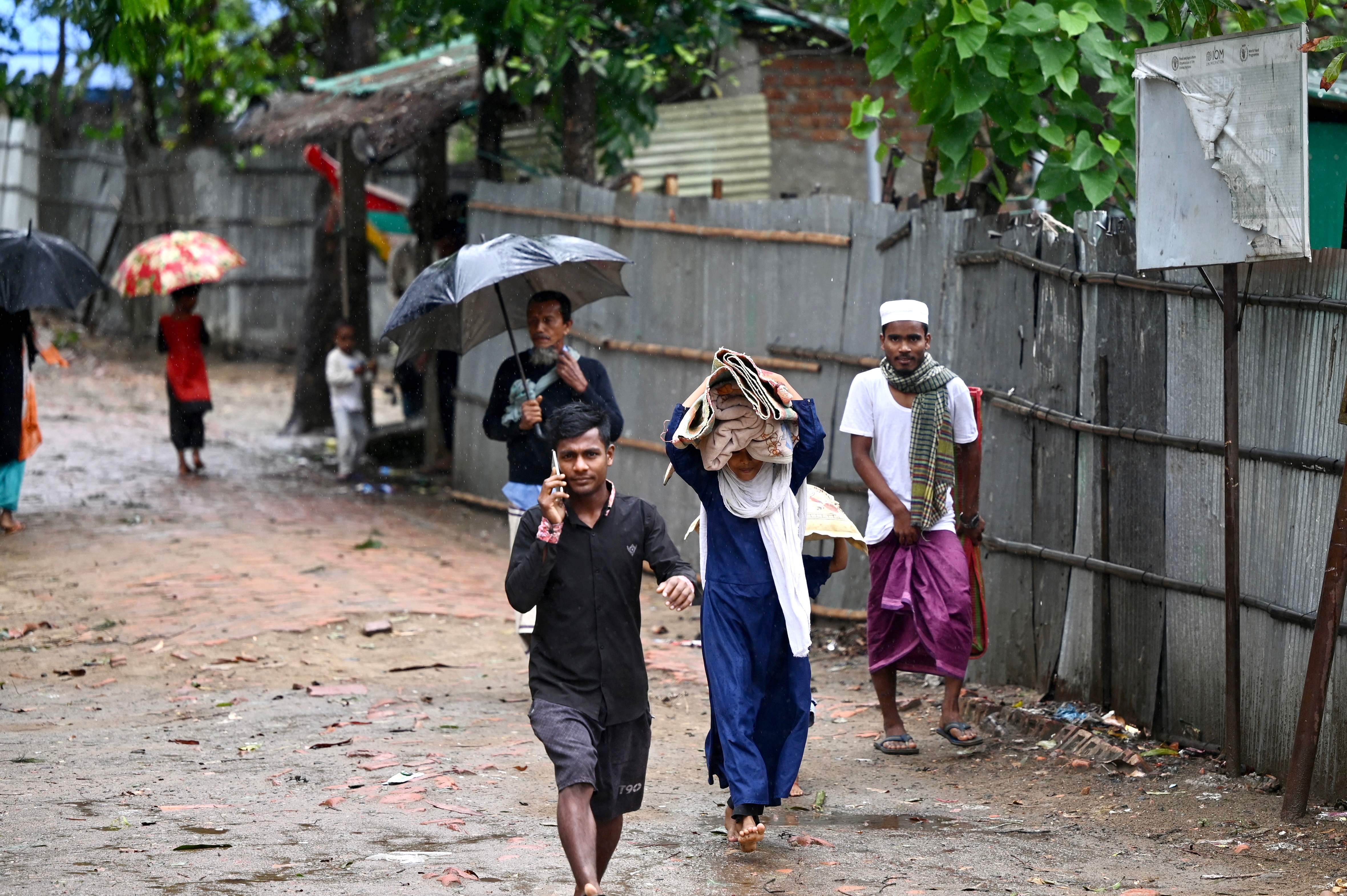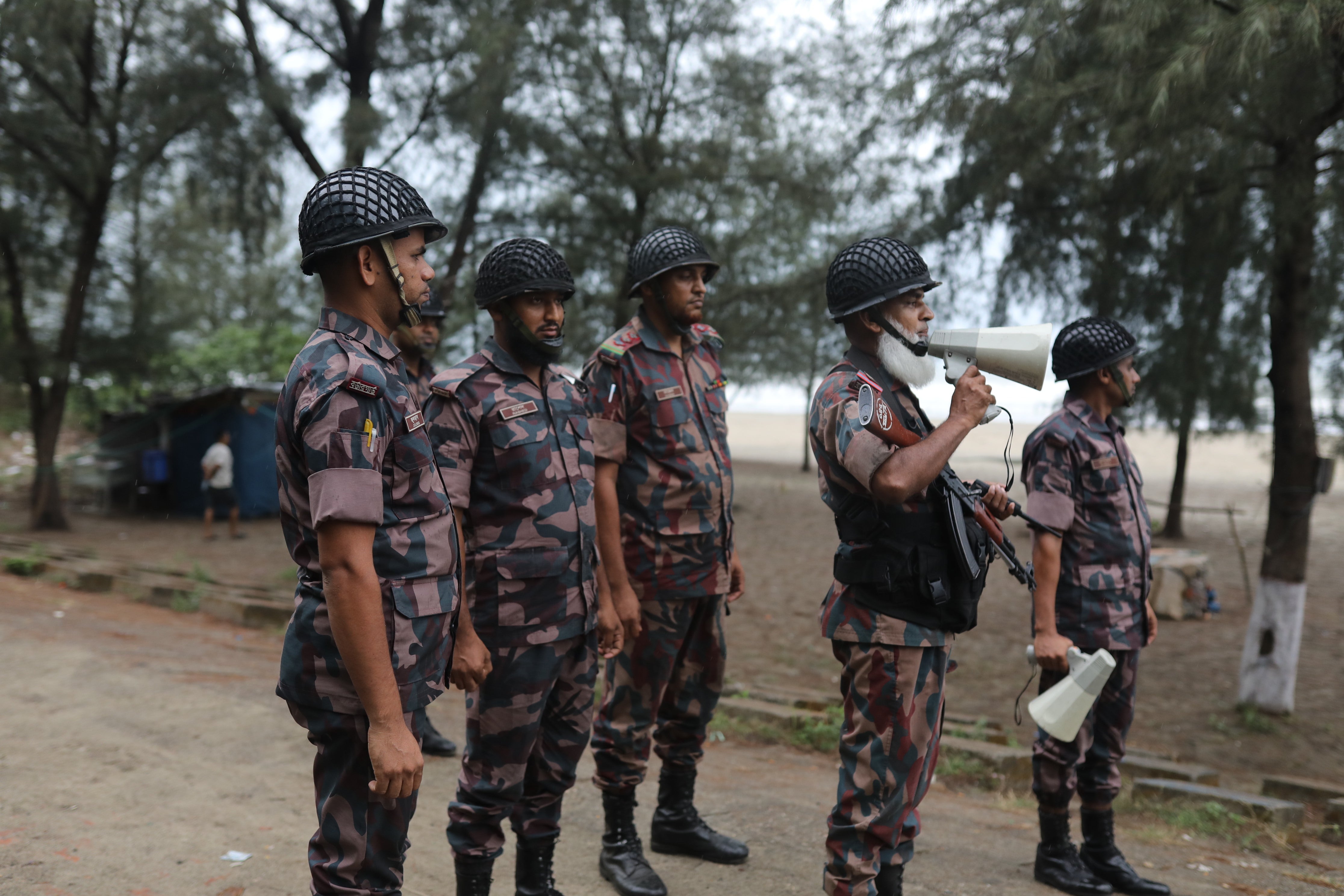Cyclone Mocha: Bangladesh evacuates refugee camps as most powerful storm in two decades makes landfall
Cyclone Mocha to make landfall near Myanmar’s Sittwe township with winds gusting at 106mph

Your support helps us to tell the story
From reproductive rights to climate change to Big Tech, The Independent is on the ground when the story is developing. Whether it's investigating the financials of Elon Musk's pro-Trump PAC or producing our latest documentary, 'The A Word', which shines a light on the American women fighting for reproductive rights, we know how important it is to parse out the facts from the messaging.
At such a critical moment in US history, we need reporters on the ground. Your donation allows us to keep sending journalists to speak to both sides of the story.
The Independent is trusted by Americans across the entire political spectrum. And unlike many other quality news outlets, we choose not to lock Americans out of our reporting and analysis with paywalls. We believe quality journalism should be available to everyone, paid for by those who can afford it.
Your support makes all the difference.Hundreds of thousands of people were evacuated to safer areas in the coastal areas of Bangladesh ahead of the landfall of the potentially most powerful cyclone in nearly two decades.
Bangladesh and Myanmar braced as extremely severe cyclone Mocha started to hit coastal areas and authorities urged thousands of people in both countries to seek shelter.
The outermost band of the cyclone reached the coast of Myanmar's Rakhine state on Sunday morning, and by afternoon the centre of the storm was expected to make landfall near Sittwe township with winds gusting at 106mph.
There have been concerns that the "dangerous cyclone" could wreak havoc in the world's largest refugee camp in Bangladesh's Cox's Bazar, where nearly one million Rohingya refugees live in makeshift homes.
The refugees, who are still reeling from a devastating fire that destroyed more than 2,600 shelters, risk losing their homes and livelihoods due to the cyclone.
Bangladesh issued the highest danger signal for Cox's Bazar, while the Meteorological Department warned the cyclone could cause severe damage to lives and property in eight coastal districts.
“Time and again, we have seen the devastating impact of extreme weather events in Cox’s Bazar,” Hasina Rahman, IRC Bangladesh Country Director, said.
“Since 2017, countless shelters, schools, health clinics and safe spaces for survivors of Gender-Based Violence have been decimated as a result of floods and mudslides, as well as preventable tragedies such as the fire in March this year.”
As a low-lying country with most major cities situated along the coastline and rivers, Bangladesh is one of the most vulnerable countries to the devastating impacts of the climate crisis, despite having less than 1 per cent share of global carbon emissions.
Last year, the South Asian country faced its “worst floods in a hundred years” that left millions impacted.

In Myanmar, more than 4,000 of Sittwe's 300,000 residents have been evacuated to other cities since Friday and more than 20,000 people are sheltering in sturdy buildings such as monasteries, pagodas and schools located on the city's highlands.
Several local residents live in areas more than three meters above sea level, places where residents believe the storm surge cannot reach, said Tin Nyein Oo, who is helping people in shelters in Sittwe. Strong winds of 40 to 48km per hour were blowing in the city on Sunday morning.
"The storm has not yet entered, so we don't have much difficulty. However, there are too many people in the shelters and not enough toilets," he added.
In Bangladesh, weather in most areas remained sunny and humid on Sunday morning as UN agencies and aid workers prepositioned tons of dry food and dozens of ambulances with mobile medical teams.

Bangladesh, with more than 160 million people, has prepared more than 1,500 cyclone shelters. The navy said it's keeping ready 21 ships, maritime patrol aircraft and helicopters for rescue and relief operations.
Heavy rainfall due to the cyclone could trigger landslides in Chattogram and Cox's Bazar and three other hilly districts – Rangamati, Bandarban and Khagrachhari, authorities said.
There has been a substantial increase in cyclonic activity in South Asian waters linked to rising ocean temperatures, according to experts. Warming in the oceans has led to higher evaporation and increased availability of moisture due to global warming.
A comparison between pre and post-global warming scenarios, a report by the Ministry of Earth Sciences (MoES) finds an approximately 50 per cent increase in severe cyclonic storms in the Bay of Bengal region, and a 52 per cent increase in the Arabian Sea region annually.
This scenario is feared to be getting worse as the world has already warmed up 1.2C since the 1800s due to man-made greenhouse gas emissions, and is heading towards 1.5C in this decade, according to the Intergovernmental Panel on Climate Change (IPCC), the UN’s top scientific panel.
According to the IPCC, the ocean surface temperature on average has increased by 0.88C between the periods of 1850–1900, with 0.60C of this warming having occurred since 1980.
The ocean surface temperature is projected to increase by up to 2.8C before 2100 based on the current increase if greenhouse gas emissions are not reduced as fast as possible.
Tropical cyclones are one of the most devastating natural disasters costing more than half a million lives all over the world in the last five decades. The Indian Ocean region, including the Arabian Sea and the Bay of Bengal is of particular concern because of the high population density along its coastlines.
In May 2008, Cyclone Nargis hit Myanmar with a storm surge that devastated populated areas around the Irrawaddy River Delta. At least 138,000 people died and tens of thousands of homes and other buildings were washed away.
“Weather conditions in the ocean are very supportive for rapid intensification of the system,” says Roxy Mathew Koll, climate scientist at the Indian Institute of Tropical Meteorology and Lead IPCC Author.
“Cyclones nowadays can retain their energy for quite a long number of days. One example of this trend was Cyclone Amphan which continued to travel over land as a strong cyclone and resulted in massive devastation.
“As long as oceans are warm and winds are favourable, cyclones will retain their intensity for a longer period.”



Join our commenting forum
Join thought-provoking conversations, follow other Independent readers and see their replies
Comments